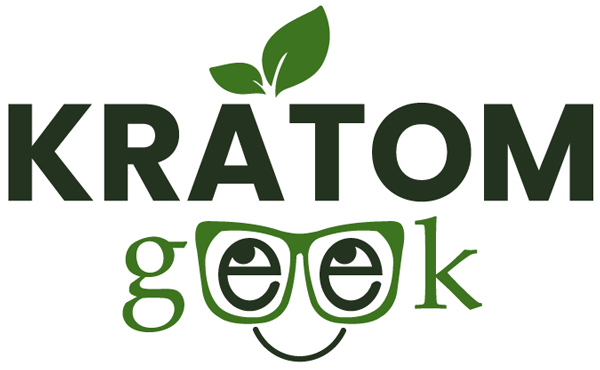Today, we’ll be learning about some of the alkaloids found in kratom. These chemical compounds can generate strong biological effects in humans and animals. And some can even provide us with medicinal benefits.
But what exactly is an alkaloid? And are they safe in our diets?
Well, an alkaloid is a naturally occurring molecular compound that consists of carbon, hydrogen, and nitrogen elements. As for the safety of alkaloids, a large majority of them are safe to consume by humans. You’ll find alkaloids in things we eat like blueberries or artichokes. And those compounds can play a significant role in your diet. Alkaloids manage to stimulate your human organs, trigger certain brain chemistry operations, and perform biological contributions for the sake of your health. Eating a varied diet that includes alkaloids provides your body with substances teeming with antiparasitic, anti-inflammatory, antibacterial, and antioxidative characteristics.
So, now that we know the basic atomic structure and some of the benefits an alkaloid can produce, it’s time to delve into a couple of the well-known alkaloids found in kratom.
While there are several of alkaloids in the kratom plant that are extremely important, we’ll focus on the two that appear more abundantly than the others. Besides, these two molecular compounds we’ll be discussing are the ones that provide the most therapeutic benefits for kratom users. They’re the reason you make a cup of kratom tea or pop a capsule. And those alkaloids are mitragynine and 7-hydroxymitragyine.
Mitragynine
Out of all the nitrogenous organic compounds in kratom, mitragynine constitutes approximately two-thirds of all its concentration found inside the plant. Now, stop and think about that for a moment. That means when you add up all the other compounds inside kratom together (and there are over 40 different ones), it will only amount to half of the entire concentration that mitragynine does. So that tells you how important that particular molecule is when comparing it to the other chemical compound components.
But even then, mitragynine only consists of approximately 0.5-2% of the entire weight of the dried leaf that you use. So as you can see, its potency carries quite a punch. And when you look at the chemical composition of the compound and the way it reacts with brain functions, then you start to realize how beneficial it truly is.
You see, mitragynine behaves as a partial opioid agonist in our brains, which means that it activates the receptors that allow us to deal with pain. But what’s even more fascinating than that is it also acts as an atypical opioid agonist. Simply put, mitragynine limits the negative side effects that would have occurred if you had been taking prescription pills. Plus, the toxicity level for the alkaloid is so low that we have yet to truly discover a single person who has ever overdosed from taking nothing but kratom.
7-Hydroxymitragynine
The next alkaloid we’ll discuss today is 7-hydroxymitragynine. It may be the second most abundant chemical compound found inside a kratom plant, but it’s definitely the most powerful one out of the entire bunch. When comparing it to its compound cousin (mitragynine), 7-hydroxymitragynine is 46 times more potent. But there’s only a limited amount found inside the kratom matter. In fact, the alkaloid concentration is only a measly 0.02-0.2% of all the alkaloids added together.
An interesting fact about 7-hydroxymitragynine is how it forms inside kratom. Unlike mitragynine, it’s not one of the original alkaloids the plant creates on its own. Instead, it is produced through a process called oxidation. And that happens when the mitragynine compound is combined with oxygen in the presence of moisture and stimulated by the light from the UV rays of the sun.
While this occurs on the tree itself, this can also be manipulated through the fermentation processes the farmers use after harvesting. That’s the primary reason why 7-hydroxymitragynine is more prevalent in the commercial kratom available for purchase than it is in the fresh leaves that are picked straight off the plant. Plus, depending on the fermentation style of the leaf you choose, it also impacts the properties found inside the batch. And contrary to the effects of mitragynine, this particular alkaloid provides a more sedative result for the user. So if a kratom product ever makes you drowsy, 7-hydroxymitragynine would be your culprit.
The Significance of the Kratom Compounds
Now that we understand a little bit about those two alkaloids inside kratom, it’s time to see why millions of people across the globe consume kratom in their diets. Looking at recent studies of the plant, scientists have discovered that kratom molecules behave in numerous different ways within our biological systems. Compounds in kratom serve as an analgesic, an antidiarrheal, an antidiabetic, an antihypertensive, an anti-leukemic, an anorectic, and an immunostimulant. And that’s not Kratom Geek making those claims, it’s the scientists. All of those arguments are in reports that are backed by science.
I wish I could go into each of those subjects at length with you today. But alas, we only have a limited time with each article. In a future composition, I’ll explain every single one of those to you in detail since it would be too long to read for one post. So, for now, we’ll just focus on the first issues I named that kratom helps people manage. Those particular complications are no stranger to anyone. We’ve all fell victims to both types of these ailments before.
Kratom’s Pain Relieving Properties
Both of the alkaloids, mitragynine and 7-hydroxymitragynine, hit the same opioid receptors in your brain that allow you to eliminate pain. So the therapeutic benefits associated with kratom tea are quite evident. While the compounds are nowhere near the potency of prescription opioids, they do perform better than taking an over-the-counter (OTC) pain reliever. But pills like Aspirin and Tylenol are not healthy for you, either. Taking too many OTC pain pills is severely bad for your liver and stomach. So kratom gives people who suffer from chronic pain another way to deal with their aches and discomfort.
Kratom’s Stimulant Properties
But that’s not the reason why a lot of people use kratom. I, for one, enjoy the tea and its alkaloid components for its stimulant effect. Since kratom is a part of the coffee family, it provides an invigorating sensation as the compounds bind with the same receptors in your brain that caffeine does. That feeling of alertness that kratom produces is the same reason people drink cups of coffee in the morning. So the kratom plant allows you to substitute one caffeine-fueled substance for another variety.
The switchover from coffee to kratom is understandable. Studies have shown that caffeine can cause your colon and intestinal muscles to contract. And when that happens, it sends a bowel movement into action. This can cause upset stomachs and lead to diarrhea. On the other hand, the alkaloids in kratom have been shown to be antidiarrheal in scientific studies. So drinking kratom can be easier on the stomach for most users.
The Alkaloids in Kratom Benefit Humanity
We have lightly touched upon two separate alkaloids and two different types of biological functions that the kratom plant furnishes us. And that’s just the icing on the cake. There are forty-plus more alkaloids we can discuss. And the well-being that kratom supplies humanity could fill up quite a few articles. So, it’s safe to say that kratom has a long list of health-giving attributes about the plant. That’s the reasons why kratom tea has been used for countless years by indigenous cultures in the Southeast region. They’ve known about for those spectacular medicinal properties for quite some time.
However, here in the West, we’ve only recently discovered the plant’s true potential. And now, more than ever, people are looking to botanical specimens as supplements to add to their diets to promote a healthier way of living. For a lot of the customers who purchase kratom products, the herbal remedy represents a shift in consciousness that seeks out supportive substances inspired by nature instead of the abominations created in laboratories by pharmaceutical companies.
This miraculous plant that we all know as kratom gives people an alternative remedy to the complications they deal with on a daily basis. And in a free society, nobody should be able to take that option away from them.






